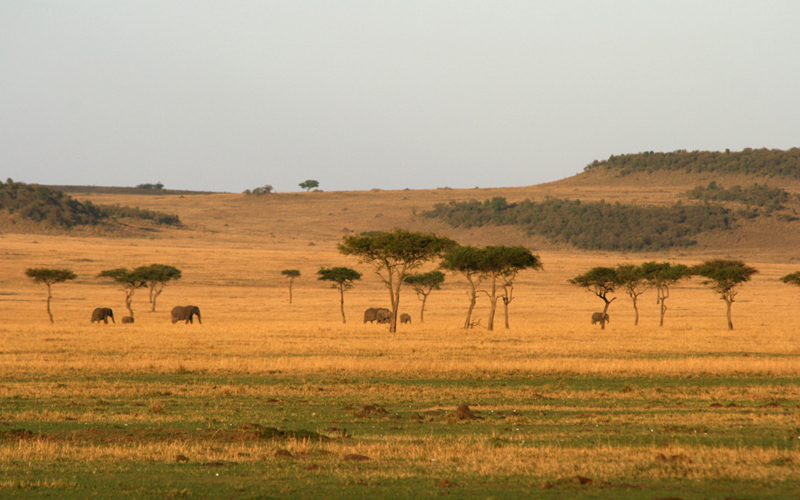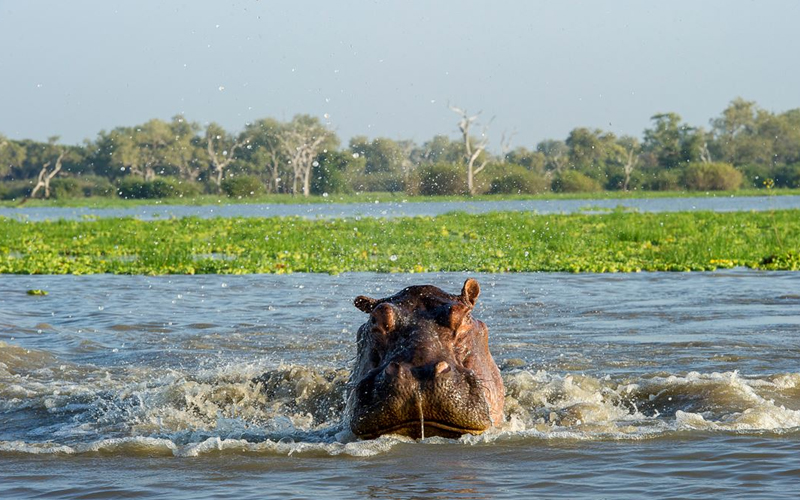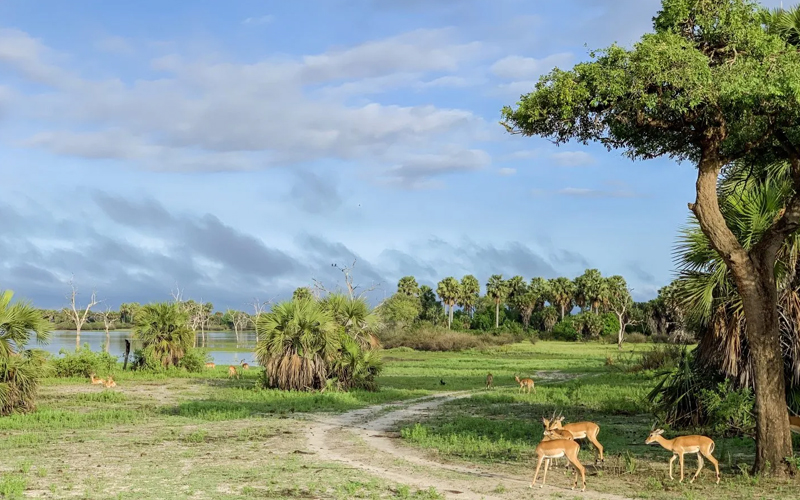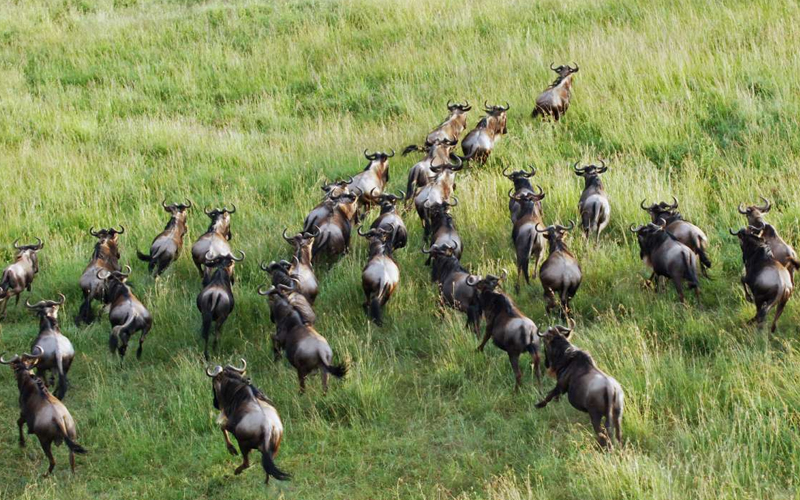Overview of Tanzania’s Climate
Tanzania’s climate is predominantly tropical, influenced by its proximity to the equator and the Indian Ocean. The country experiences two main seasons: the dry season and the rainy season. Each season brings its unique characteristics and impacts on wildlife viewing, making it essential to understand their differences.
The Dry Season (June to October)
- Weather Conditions: The dry season is marked by clear skies, sunny days, and cooler temperatures. Daytime temperatures typically range from 20°C to 30°C (68°F to 86°F), while nights can be chilly, especially in higher altitude areas like the Ngorongoro Crater and the Serengeti.
- Wildlife Viewing: The dry season is considered the best time for wildlife viewing in Tanzania. As water sources dwindle, animals congregate around remaining waterholes and rivers, making them easier to spot. The sparse vegetation also enhances visibility. This period is ideal for witnessing the Great Migration in the Serengeti, where millions of wildebeest and zebras move in search of fresh grazing grounds.
- Popular Destinations
- Serengeti National Park: Known for the Great Migration, the Serengeti offers spectacular wildlife sightings during the dry season.
- Ngorongoro Crater: The crater’s permanent water sources attract a high concentration of wildlife, making it a prime destination year-round, with even better visibility during the dry season.
- Tarangire National Park: Famous for its large elephant herds, Tarangire National Park is vibrant in the dry season as animals gather near the Tarangire River.
The Short Rainy Season (November to December)
- Weather Conditions: The short rainy season, known as the “short rains,” brings brief and sporadic showers. Temperatures are warm, ranging from 25°C to 30°C (77°F to 86°F). The rains rejuvenate the landscape, transforming the dry plains into lush, green expanses.
- Wildlife Viewing: While the rains may cause some animals to disperse, this season offers unique wildlife experiences. It marks the beginning of the calving season for wildebeest in the southern Serengeti, attracting predators and creating dramatic wildlife interactions.
- Popular Destinations
- Southern Serengeti (Ndutu Region): The calving season draws predators, making for thrilling wildlife encounters.
- Selous Game Reserve: The short rains enhance the beauty of Selous, providing a lush backdrop for game viewing.
The Long Rainy Season (March to May)
- Weather Conditions: The long rainy season, or “long rains,” brings more consistent and heavier rainfall. Temperatures remain warm, but the increased humidity can make it feel hotter. The landscape becomes exceptionally green and vibrant during this period.
- Wildlife Viewing: Although it is the low season for tourism, the long rains offer several benefits for adventurous travelers. The abundance of water attracts migratory birds, making it a paradise for birdwatchers. However, dense vegetation can make spotting wildlife more challenging.
- Challenges
- Accessibility: Some roads and trails may become muddy and impassable, making travel challenging in certain areas.
- Wildlife Viewing: Dense vegetation can make it harder to spot animals, but experienced guides can still provide excellent sightings.
- Popular Destinations
- Ngorongoro Crater: Despite the rains, the crater remains accessible and offers excellent wildlife viewing opportunities.
- Lake Manyara National Park: Known for its tree-climbing lions and large flocks of flamingos, Lake Manyara National Park is beautiful during the rainy season.
Shoulder Seasons (January to February, June)
- Weather Conditions: The shoulder seasons, which fall between the main rainy and dry seasons, offer mild and pleasant weather conditions. Temperatures are generally comfortable, making it an excellent time for those who prefer a quieter experience.
- Wildlife Viewing: The shoulder seasons provide a balanced safari experience. January to February is part of the calving season in the Serengeti, offering opportunities to see newborn wildlife. June marks the beginning of the dry season and the start of the Great Migration.
- Popular Destinations
- Serengeti National Park: Both shoulder seasons offer unique opportunities to experience the Great Migration and the associated predator-prey dynamics.
- Ruaha National Park: Known for its rugged beauty and diverse wildlife, Ruaha is a fantastic destination during the shoulder seasons.
Packing Tips for a Tanzania Safari
- Clothing
- Layered Clothing: Pack light, breathable clothing for warm days and a few layers for cooler mornings and evenings.
- Neutral Colors: Opt for neutral-colored clothing to blend in with the environment and avoid attracting insects.
- Essentials
- Sunscreen and Hat: Protect yourself from the sun with high-SPF sunscreen and a wide-brimmed hat.
- Insect Repellent: Essential for protecting against mosquitoes, especially during the rainy seasons.
- Binoculars and Camera: Enhance your wildlife viewing experience with a good pair of binoculars and a camera to capture your memories.
Understanding Tanzania’s safari climate is key to planning a successful and enjoyable adventure. Whether you prefer the abundant wildlife of the dry season, the lush landscapes of the rainy season, or the balance of the shoulder seasons, Tanzania offers a year-round safari experience. By being aware of the climate’s impact on wildlife viewing and planning accordingly, you can ensure a memorable and fulfilling safari experience in this incredible African destination.
FAQs
What is the best time for a safari in Tanzania?
The best time for a safari in Tanzania is during the dry season (June to October) when wildlife is easier to spot, and the weather is pleasant. However, each season offers unique experiences, so the best time depends on your preferences.
Is it possible to go on a safari during the rainy season?
Yes, it is possible to go on a safari during the rainy season. While some roads may be challenging, the landscape is lush, birdlife is abundant, and there are fewer tourists, making for a more intimate experience.
What should I pack for a safari in Tanzania?
Pack light, breathable clothing, neutral colors, sunscreen, a hat, insect repellent, binoculars, and a camera. Layered clothing is essential for adjusting to varying temperatures.
How do the shoulder seasons compare to the main seasons for a safari?
Shoulder seasons offer mild weather and fewer tourists. January to February features the calving season, while June marks the start of the Great Migration. Both shoulder seasons provide a balanced and rewarding safari experience.
Are safaris in Tanzania family-friendly?
Yes, many lodges and tour operators offer family-friendly safaris with activities tailored for children. Tanzania is a great destination for families looking to explore wildlife and nature together.




